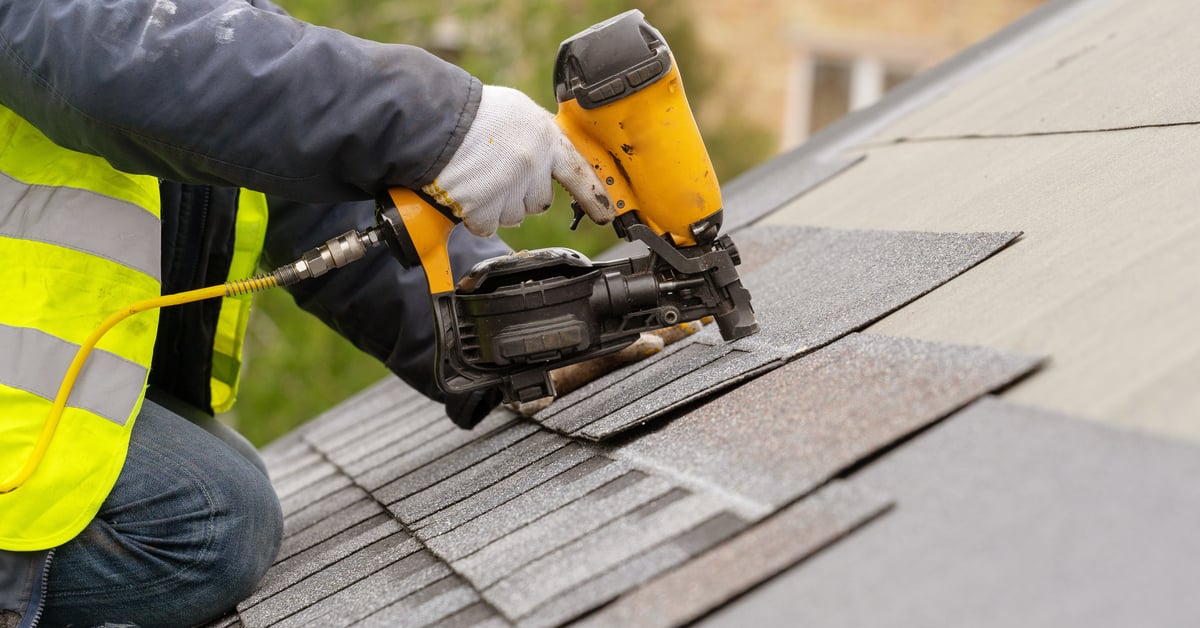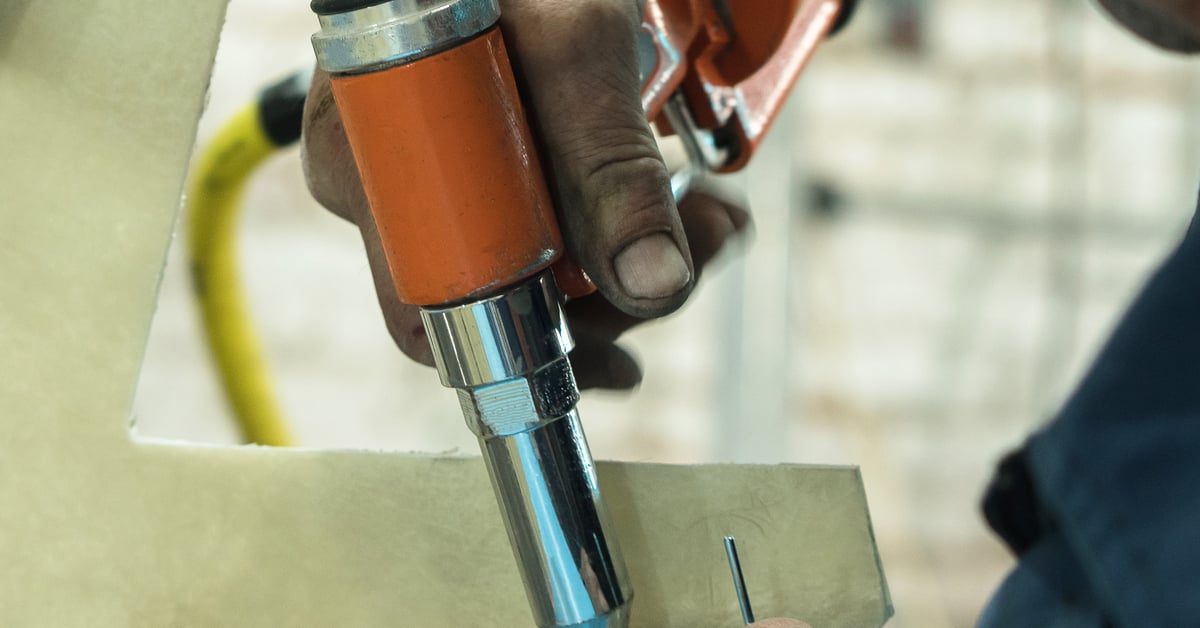
Maintaining your tools might sometimes feel like a chore, but when it comes to pneumatic equipment, it’s a necessity you can’t ignore. Our focus today is on the importance of lubricating tools because many industry professionals want to know more about them in order improve their maintenance regimens. This information ensures professionals understand the dire need to oil their air tools.
What Are Pneumatic Tools?
A pneumatic tool is also an air tool. These tools use compressed air from an air compressor for fastening, drilling, and cutting tasks. Common examples include air staplers, nail guns, and impact wrenches in the manufacturing, automotive, and construction industries.
How Do Pneumatic Tools Work?
Pneumatic tools operate through complex mechanisms that convert compressed air into mechanical work. Air pressure drives a piston or motor, performing the intended action. For instance, you can use it for driving a nail or tightening a bolt.
Who Uses Pneumatic Tools?

Pneumatic tools have widespread uses across many industries, owing to their efficiency, power, and relatively low maintenance requirements. Manufacturers employ pneumatic tools for assembly lines, utilizing air-powered torque wrenches and rivet guns to ensure precision and consistency. In the automotive industry, mechanics use impact wrenches, air ratchets, and spray guns to reduce physical strain.
Construction workers rely heavily on air tools like nailers, staplers, and hammer drills, which enable them to complete framing, roofing, and masonry work rapidly and accurately. Even in woodworking, artisans and carpenters opt for pneumatic sanders and chisels for smooth finishes and intricate detailing.
Applications of Pneumatic Tools
Professionals in various industries leverage pneumatic tools for various specialized applications. For instance, manufacturers use pneumatic devices for assembly and fabrication, while automotive uses them to fasten, sand, paint, and inflate and mount tires. Additionally, construction workers use these tools to quicken their tasks, such as drilling through concrete and nailing roof cladding.
Why Lubrication Matters
Reduces Wear and Tear
Lubricating pneumatic gear minimizes the friction between moving parts, drastically reducing wear and tear. This decreases the number of breakdowns and increases the tool’s life.
Enhances Performance
Without lubrication, the internal components of pneumatic tools can seize up and lead to decreased performance. Lubrication ensures that all parts move smoothly, maintaining optimal performance levels.
Increases Safety
Friction and heat are the enemies of any mechanical system. Without adequate lubrication, pneumatic tools can overheat and pose a safety risk to the operator. Pneumatic equipment is safer to use when lubricated.
Reduces Operational Costs
Regular maintenance, including lubrication, can decrease overall operational costs. By extending the life of your tools and reducing the need for frequent repairs, you can allocate resources more effectively.
Prevents Rust and Corrosion
Lubricants often have anti-corrosive properties that protect the internal components of pneumatic tools from rust and corrosion. This is especially important when operating air tools in humid environments.
How To Lubricate Pneumatic Tools
Choose the Right Lubricant
Not all lubricants are the same. Make sure to use a lubricant designed for pneumatic tools to ensure optimal performance.
Follow Manufacturer Guidelines
Always follow the manufacturer’s guidelines for lubrication, including the type of oil and the application frequency.
Regular Maintenance Schedule
Incorporate lubrication into your regular maintenance schedule. Consistency is critical for extending the life and performance of your tools.
Inspect for Issues
It’s crucial to inspect your pneumatic tools so you can find problems and fix them right away. Keep in mind that lubrication can help to prevent problems, but it’s not a cure-all.
Common Mistakes
Over-Lubrication
While you might think that more is better, over-lubrication can lead to its own set of problems. For instance, too much can attract excessive dirt and debris.
Inconsistent Lubrication
Not lubricating enough or forgoing it can cause erratic tool performance and increase wear and tear. Make it a habit to lubricate your tools regularly.
Using the Wrong Lubricant
Using a general-purpose lubricant instead of one designed for pneumatic tools can cause damage and reduce performance. Read the label, and make sure you’re using the right oil.
The Role of Lubricants in Different Environments
Humid Conditions
Humid environments can accelerate rust and corrosion. Using a lubricant with anti-corrosive properties is crucial in these settings.
Cold Weather
Cold weather can thicken lubricants and make them less effective. Choose a lubricant that performs well in low temperatures.
Dusty Environments
Lubricants can attract particles in high-dust environments, leading to clogs and wear. Regular cleaning, in addition to lubrication, will protect your pneumatic tools.
Benefits of Lubrication

Oiling your air tools can improve the lifespan by reducing wear and tear, preventing rust, and ensuring smooth operation. Additionally, well-lubricated tools perform at their best, providing consistent power and reliability.
Addressing Common Concerns
- The savings from reduced wear and tear and extended tool life far outweigh the initial investment in lubricants.
- Regular lubrication requires a time commitment, but the benefits of tool performance and longevity make it a worthwhile investment.
- Many modern lubricants are environmentally friendly, reducing the impact of disposing of used product.
Lubrication and Tool Types
- Air staplers require regular lubrication to ensure the piston moves smoothly, preventing jams and misfires.
- Lubricating nail guns maintains their performance and reduces the risk of damaging the gun or the workpiece.
- Impact wrenches benefit from lubrication to reduce wear on the hammer and anvil, ensuring consistent torque output.
Expert Tips for Optimal Lubrication
- Make lubrication a regular part of your maintenance routine to ensure consistent tool performance.
- Invest in high-quality lubricants designed for pneumatic tools to maximize the benefits.
- Maintain a log of lubrication schedules and any issues that arise to track the effectiveness of your maintenance efforts.
Proper Lubrication Is Key
Lubrication is essential for maintaining the efficiency, safety, and longevity of your pneumatic tools. Incorporating regular lubrication into your maintenance routine can reduce operational costs, enhance tool performance, and create a safer working environment. Don’t neglect the importance of lubricating pneumatic tools!
Buy Your Tools at Salco Staple Headquarters
Ready to take your tool maintenance to the next level? Discover the benefits of our premium air-powered staple guns at Salco Staple Headquarters. Perfect for all your project needs, our staple guns are designed with longevity in mind—just like your tools should be!